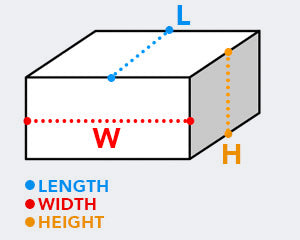5 Stars
Great quality and fast delivery
Product code: B-W1.7H4L5-N50

Prices are GST Incl.
Volume pricing available on requestAustralia's Leading Supplier
Shipping Worldwide*
30 Day Returns
Same Day Dispatch*

This block magnet is magnetised axially through the 4mm thickness and contains powerful N50 Grade Neodymium material that provides 0.43kg of pull-force. The nickel-plated coating significantly improves durability and this block emits a surface gauss reading of 6740G.
Small Neodymium magnets are used to miniaturise the microphones and speakers in our smartphones and many other high-tech devices that send and receive sound. Tiny magnets inside the microphone of the device act as transducers that convert sound wave vibrations in the air into electrical currents. These electrical signals can then be transmitted, amplified or recorded. Loudspeakers, such as PA systems, use this principle in reverse to convert electric signals into amplified audible sound waves. Most intercom systems and two-way radio transmitters operate with Neodymium magnets in the microphone and speaker that are sturdy and reliable for outdoor use.
Highly technical microdevices in medicine and electronics use tiny permanent magnets to activate processes remotely and without the friction of larger, more mechanised devices that often reduces their long term reliability. Many warning and safety sensors utilise tiny Neodymium magnets to detect movement and proximity of ferrous materials that can indicate pressures and temperatures that may be approaching dangerous levels. Neodymium magnets have impacted many recent engineering and scientific methodologies and have also helped to initiate the research and development of completely new ones.
No FAQ available

NB: Ranges are indicative for product category, please check individual products for specic values within that range.



The most common coating for Neodymium magnets is Nickel + Copper + Nickel (Ni + Cu + Ni). This coating offers the magnet relatively good protection from corrosion and passive applications. If the magnet will be exposed to moisture or liquid then consider the use of an organic coating such as Epoxy. A hard wearing coating, Epoxy is suited to applications where the magnet will come under some friction or knocking.

Magnets are readily available in Blocks, Discs, Cylinders & Rings. AMF Magnetics specializes in the supply of short-run prototype magnets including Arc Segments, various magnetic orientations etc. If you need a magnet size that we don't carry in stock, submit a Design-a-Magnet enquiry for a quote on your custom magnet design.

Neodymium magnets are offered in several different grades. The first section N30-54 has an operating temperature of up to 80 degrees. Most of our stock only goes up to N38. The second section, denoted with the "M" prefix after the grade has an operating temperature 100 degrees. After this the grades are "H", "SH", "UH" & "EH". In order for the magnet to withstand a higher operating temperature, during production more of the raw material PrNd is incorporated as these elements have a naturally occurring resistance to high temperatures.

The Pull Force listed for each magnet is based on lifting 10mm thick steel from a horizontal surface. Magnets on a vertical surface (of 10mm thick steel) are generally able to hold around only 30% of the pull force listed in the product description. This is due to the effects of gravity and the lack of friction between the surface and the shiny magnet. Read More